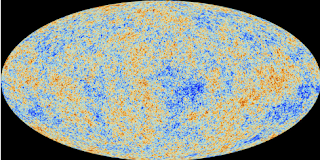1 Introduction
The main purpose of this article is to delve into how nonlinear is the process of scientific discovery and also
to emphasize the fact that we are in fact sitting on shoulders of giants rightly said by Sir Issac Newton Before
anything else, I’ll start with a fact(which you probably have heard or thought about before) that is so simple but
surprising which is whenever we look at something(anything), we look at the past sort of like a time machine
because photons, which is how we humans typically observe as they carry the information of what we are trying
to look at, reflecting from any object take time to reach our eyes, now it isn’t much when we are observing nearby
objects as time it takes is low. Still, when it comes to far-away objects in space, it gives us a way to look so
long back that we can get information relating to how we all came into existence, which is profound in some sense.
Now when it comes to observation from earth there are some issues we face. I am sure you all have heard, at
least for me it was told, about how the universe we observe is isotropic that is in any direction we look we don’t
see any difference at large scale and evidence for it was cosmic microwave background observation who accidental
discovery(read about it) is a fascinating example of science progress, without digressing much, be any point on
CMB map has a thermal black body spectrum at a temperature of 2.72548±0.00057 K. This low difference of
temperature contributes to isotropic nature. As shown in the figure below it might look like there is a large
difference in color but that corresponds to 0.00057K.

Figure 1: The Cosmic microwave background(CMB) as observed by Planck
Understanding this observation, it seems fair conclusion, but you have to remember the important point that
CMB was first recorded from observation of electromagnetic radiation from the earth, now we know the basic
fact that the earth is moving(at a high speed), if the universe is isotropic we should see a directional bias towards
the direction we are moving in which follows a particular equation derived in special relativity. This gives us a
dipole type of observation as shown in the Figure 2 below
Figure 2: The Cosmic microwave background(CMB) as dipole
Now for those of you who haven’t come across an
observation of radiation from a moving source, Here’s
an analogy, Assume Case 1 that it’s raining about
your head completely perpendicularly and you can
watch every droplet falling in a straight line perpendicular to the ground, but rather than being in rest, Case
2. is you are driving a car(or running) in same uniform
rain, try to watch rain droplets(imagine), they will be
falling tilted towards you when you watch them, hence
a directional bias.

It took some time for people to verify this and now standard known that CMB follows
that equation and forms a dipole-like shape, which is
as it should have been if special relativity is correct because the analogy I gave you is classical as you driving
the car is not at very high speed, so the equation of special relativity is more accurate than our analogy. This is
one of many cases that shows you that we have to be careful to interpret what we observe and what is present.
Now I will talk about another accidental discovery which is called aberration of light which was done by James
Bradley along with Samuel Molyneux while attempting to discover stellar parallax.
Parallax is easy to understand
as we observe it daily, Parallax is just a fancy name for it. We can do a simple exercise(or you can google it I
have attach a simple reference[5]), extend your arms horizontally up and hold your thumb up, now focus on your
thumb through just the right eye and notice the background, and then close the right eye and observe through
the left eye, and observe the shift in the background due to the shift in observation eye, now imagine if you
clicked a picture keeping the background same in both frames, you would notice shift in position of thumb in
both pictures, but this is just an apparent change, due to change in observation point. when this same thing
happens, due to a change in the position of Earth in the solar system we change our observation point in space
and then we call it Stellar parallax.
Coming back to our story of accidental discovery, Bradley and Molyneux
decided to observe the star Gamma Draconis for stellar parallax, which comes
directly overhead, near the Pole star, thereby minimizing the displacement
of rays by refraction in the Earth’s atmosphere. Figure 3 shows their high precision 24-foot telescope, made by George Graham (1675-1751), which was
fixed to the internal side of the chimney in Molyneux’s house, extending to a
hole in the roof. The angular resolution was about 1”. It was found that body
heat was enough to disturb the plumb line, and the motion of the plumb bob
was damped by immersion in water. Air currents were reduced by enclosing
the plumb line in a tube, but this provided a home for spiders and their
webs which had to be removed from time to time. To make the observations,
starting on December 17, 1725, James or Molyneux would lie on the couch by
the fireplace looking up into the telescope’s eyepiece. A calibrated micrometer was used to swing the telescope between the star and the plumb line
and measure the star’s north-south deviation when it crossed an east-west
cross-hair. This was repeated for two years. Unfortunately, In this effort,
they failed because the angle was too small to be seen by the instruments of
that

Figure 3: The chimney in Molyneux’s house in Kew Gardens in 1725, showing Bradley’s telescope attached
time period, and stellar parallax (of 0.3”) would not be detected until
the work of Bessel in 1838.
Bradley’s discovery of the aberration of light, while investigating stellar parallax, illustrates the non-linear path of scientific discovery—how a quest for one
answer can lead to an entirely different, groundbreaking realization. This mirrors how observation of the Cosmic Microwave Background, initially thought
to be noise, became one of the most significant observations in cosmology.
Hence what they saw didn’t match the expected result that they set out to
achieve, but shifted by precisely 90 degrees. They observed a shift that wasn’t
due to parallax and every time shifted by a phase of 90 degrees which no one could understand why. In the end,
James Bradley gave the final explanation citing the fact that we need to take into account the motion of the earth,
mathematical analysis is done below, The Amazing part is it also disproves the case of stationary ether(think
how), and the explanation is almost similar to the one about the car that I first presented but in this case, the
Car is earth and instead of umbrella you have a telescope, just like an umbrella you have to tilt the telescope
to observe to star and that angle you have to shift will change because the direction of earth’s velocity changes
during it’s a revolution around the sun. Why is direction of the earth’s velocity important can be understood by
the analysis that follows, which will conclude that a change in the direction of the earth’s velocity will change
the direction of relative velocity which in turn will change direction of tilt.

Classically this can be shown in Figure4, we can calculate the angle of tilt required by using speed of the earth
in the solar system V E and the speed of light V L, where V LE = V L − V E is relative velocity and tan(θ) = |V E |
|V L |
.
This mathematical interpretation of Bradley’s data fitted well with all his observations. His best estimate of the
average value of θ was 20.25” compared with today’s value of 20.47” was a remarkable achievement.
Now for some of you, this might seem simple and it is now simply explained, but you have to imagine how long
ago this discovery was made, in the 1700s when people were still debating whether Earth followed the Copernican
model or not, when you need to be rich or convince someone rich to conduct observation when we didn’t have
satellites to give you high precision results, which seem trivial now but weren’t remotely obvious to people then. I’ll end with a quote from Galileo Galilei:
“All truths are easy to understand once they are discovered; the point is to discover them.”
2 Bibliography
1. Lightspeed: The Ghostly Aether and the Race to Measure the Speed of Light (https://academic.oup.com/book/
32357/chapter-abstract/268621906?redirectedFrom=fulltext)
2. Bradley’s 8-foot Transit Instrument (1750) (http://www.royalobservatorygreenwich.org/articles.php?article=1296)
3. Bradley’s letter about what he discovered, 25 pages long IV. A letter from the Reverend Mr. James Bradley Savilian Professor of Astronomy at Oxford, and F. R. S. to Dr. Edmond Halley Astronom. Reg. giving an account of
a new discovered motion of the fix’d stars. (https://royalsocietypublishing.org/doi/epdf/10.1098/rstl.1727.0064)
4. https://en.wikipedia.org/wiki/Aberration
5. Excercise of parallax: https://www.coe.edu/faculty-staff/james-wetzel/astronomy/parallax
-- Arpit (MS22)






Comments
Post a Comment